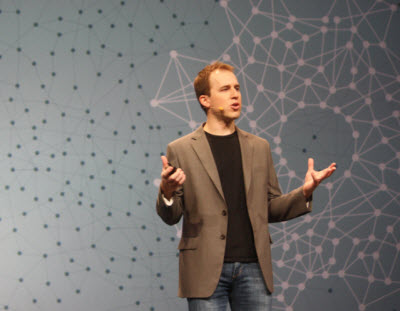Want smarter insights in your inbox? Sign up for our weekly newsletters to get only what matters to enterprise AI, data, and security leaders. Subscribe Now
 At its f8 conference in San Francisco Wednesday, Facebook announced that it is launching a series of plugins that will dramatically expand its presence across the Web.
At its f8 conference in San Francisco Wednesday, Facebook announced that it is launching a series of plugins that will dramatically expand its presence across the Web.
“Social plugins are a way you can provide an instantly personal experience with one line of HTML,” said Bret Taylor, the company’s director of product.
All of these pieces form the basis of what Facebook says is a new philosophy for the web — one that is centered around people and their real affiliations. That’s instead of hyperlinks and pages, which have formed a rough proxy for these real connections over the past two decades.
These new plugins include:
- A ‘Like’ button for the web: A frictionless way of sharing content back on Facebook. Between Facebook’s launch partners, the company estimates that it will serve 1 billion Facebook “like” buttons by day-end. That real-time data on people’s preferences will give the company an accurate real-time barometer of influential sites across the web.
- Activity streams: What a user’s friends have done on the site
- Recommendations: Personalized content recommendations from a site
- The Facebook login the company offers on external sites will also look different: It will show the person’s friends who have already joined the site.
- On top of that, there is a Meebo-like bar that publishers can install at the bottom of their page so that visitors can chat with their friends while browsing a site.
Most importantly, the company launched powerful set of features that will compel publishers across the web to organize their content for sharing and indexing by the social network. These new features could essentially put the web at Facebook’s beck and call.
The company released a Graph application programming interface that allows publishers to tag their content by type. For example, if a page is about a Restaurant or a band, a developer can label it so Facebook and other apps accessing the graph can easily call up a friend’s favorite bands or restaurants.
“You can represent any real-world object on the Internet using this open graph protocol,” Taylor said. “The web has been connected by hyperlinks, between static pages of content. We think that connections between people is more important.” He added that the company had overhauled its technical infrastructure to accommodate this idea.
These ideas are pieces of what Facebook says is a fundamentally different thesis about how the web should operate.
“The web is at a really important turning point right now. Up until recently, the default on the web has been that most things aren’t social and most things don’t use your real identity,” said chief executive Mark Zuckerberg. “We’re building toward a web where the default is social. Every application will be designed from the ground up to use real identity and friends.”
At the first f8 conference, Zuckerberg introduced the idea of the social graph — mapping the massively interconnected web of relationships between all people in the world. The open graph has a much broader definition. Facebook has mapped social relationships. Yelp, for example, has mapped out local venues. Pandora has mapped out people’s music tastes.
“If we can take these separate parts of the graph, we can create a web that’s smarter, more personally and semantically aware,” he said.

